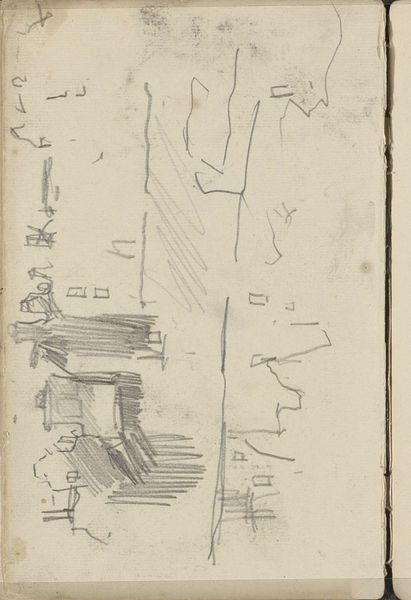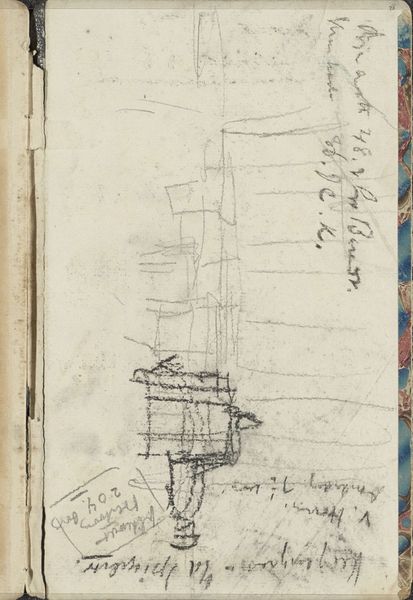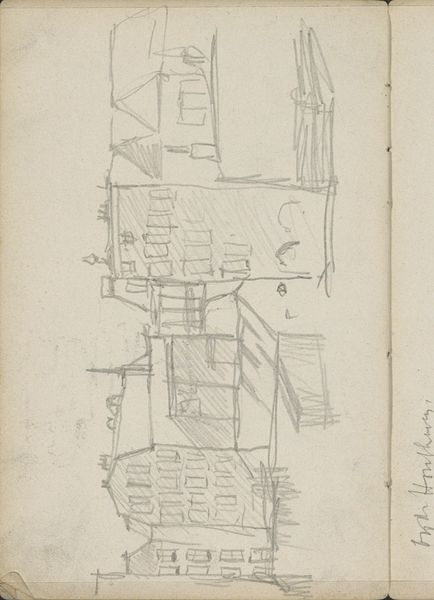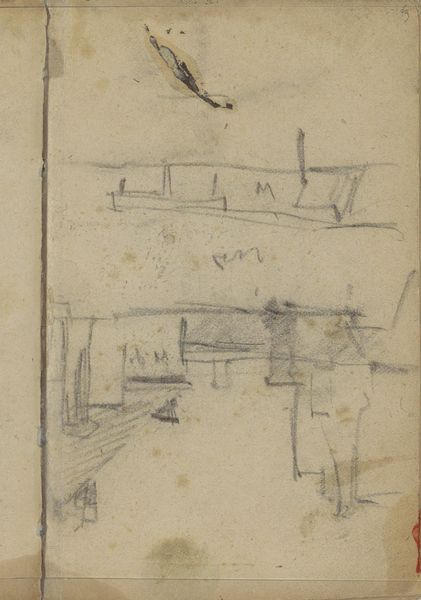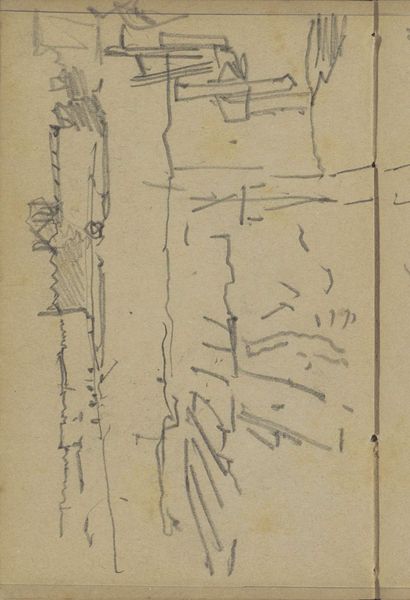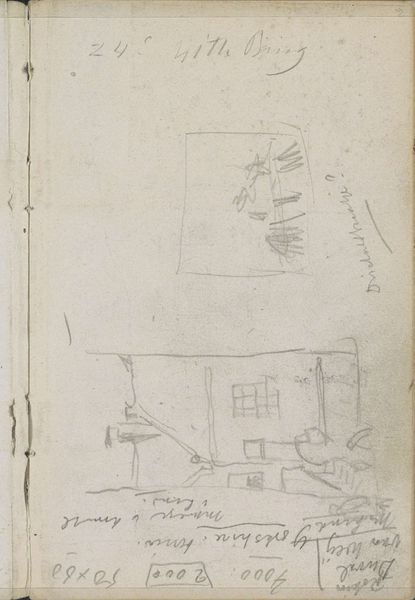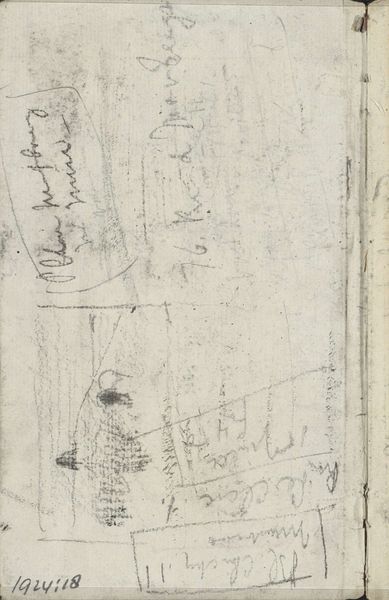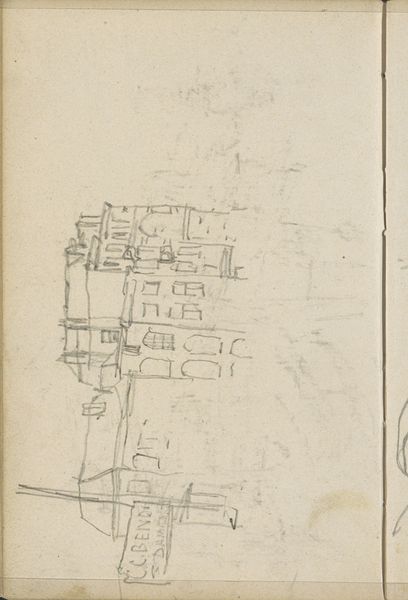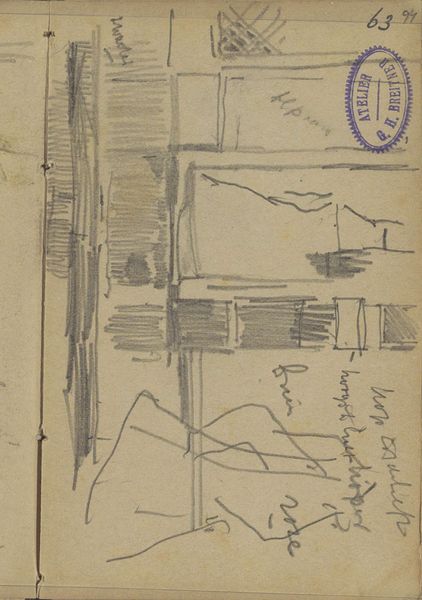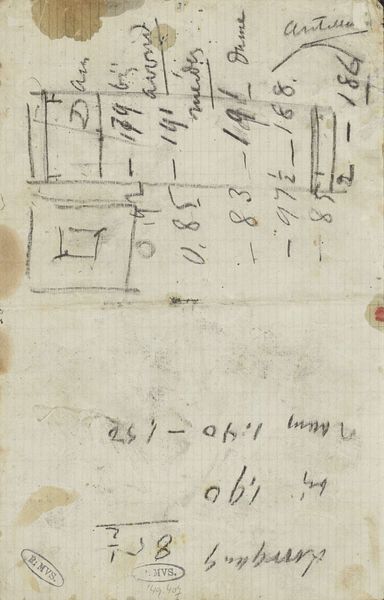
Studie, mogelijk van een wand met aanplakbiljetten 1884 - 1886
0:00
0:00
drawing, pencil, poster
#
drawing
#
aged paper
#
toned paper
#
impressionism
#
sketch book
#
hand drawn type
#
personal sketchbook
#
idea generation sketch
#
sketchwork
#
sketch
#
pencil
#
line
#
sketchbook drawing
#
cityscape
#
poster
#
sketchbook art
#
initial sketch
Copyright: Rijks Museum: Open Domain
Editor: This is "Studie, mogelijk van een wand met aanplakbiljetten," or "Study, possibly of a wall with posters," made between 1884 and 1886 by George Hendrik Breitner. It’s a pencil drawing. The composition seems quite chaotic, like layers upon layers of urban decay. What do you see in this sketch? Curator: It’s fascinating how Breitner captures the ephemeral nature of urban life even in this seemingly simple sketch. Look at how the layers of posters create a palimpsest. Each poster, even fragmented, once conveyed a message, a desire, a call to action. Now, they're fading into the city's visual noise. Editor: A palimpsest! Like a manuscript that's been written on multiple times. Curator: Exactly! These fleeting images, consider their original symbolic weight: announcements of cultural events, political declarations, commercial advertisements. They spoke to the aspirations and anxieties of Breitner’s contemporaries. What happens when those voices fade? Editor: I guess they become whispers of the past. Is Breitner trying to say something about the transience of fame or influence? Curator: Perhaps. Or about the ever-changing face of the modern city, where new sensations constantly overwrite the old. Consider how the posters compete for attention, mirroring the clamor of urban life. The overlapping represents the psychological effect on the viewer as consumer and the struggle of ideas vying for dominance in the public sphere. Editor: That makes me think about how we’re constantly bombarded with images and information today. Maybe the symbolic weight has just shifted, not disappeared. Curator: Precisely. Breitner’s study allows us to reflect on how we consume and process visual information, and how these images shape our understanding of ourselves and our world. Editor: I hadn’t thought about it that way before. It’s amazing how much meaning can be packed into a seemingly quick sketch.
Comments
No comments
Be the first to comment and join the conversation on the ultimate creative platform.
